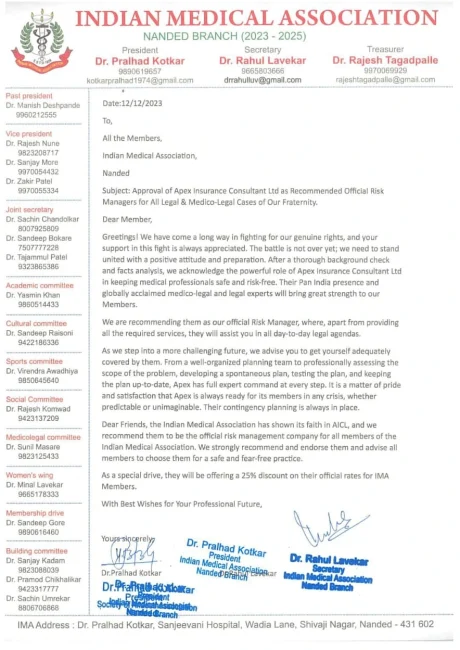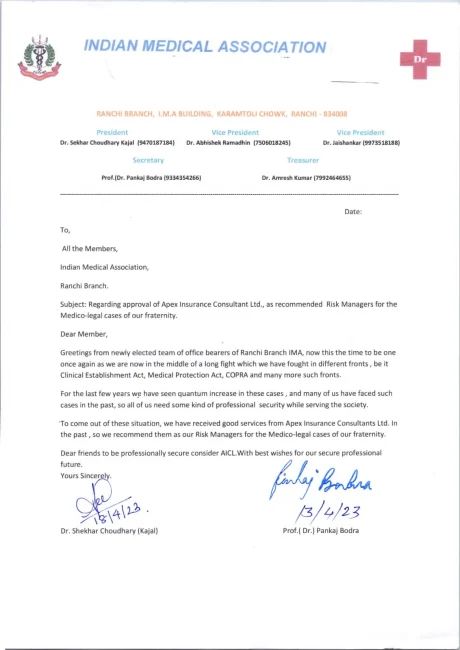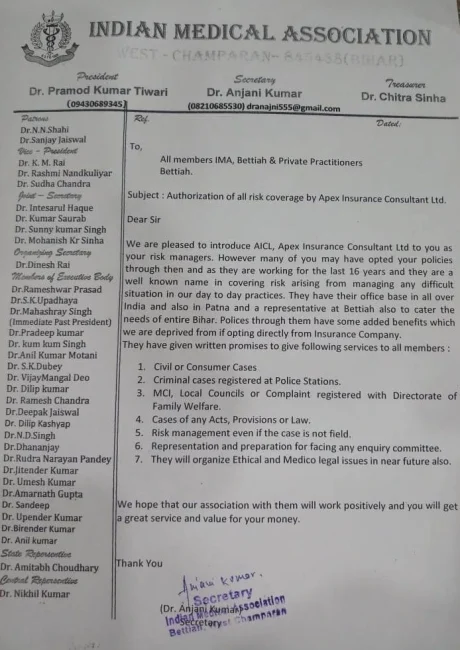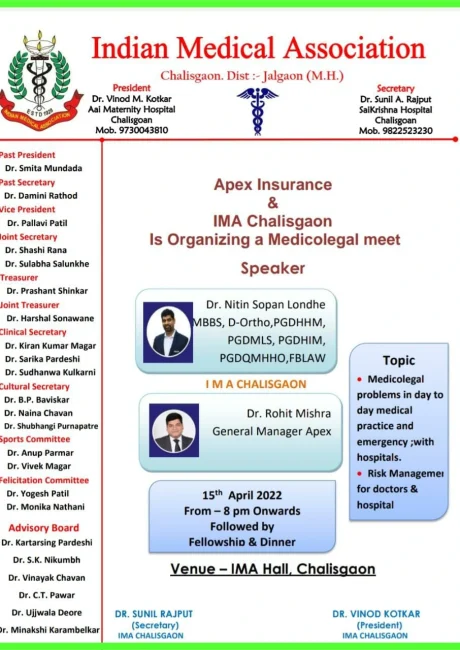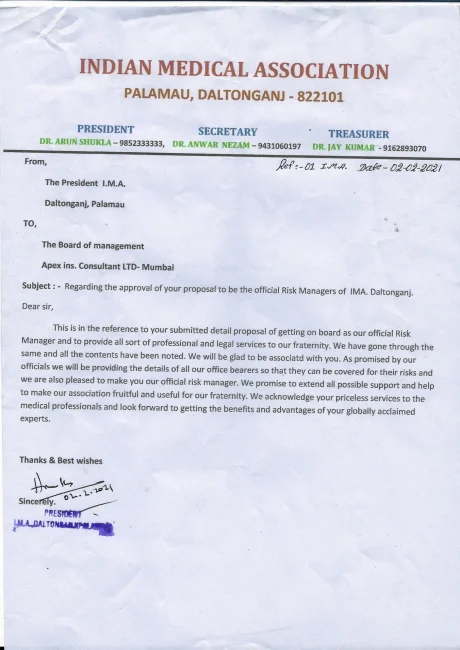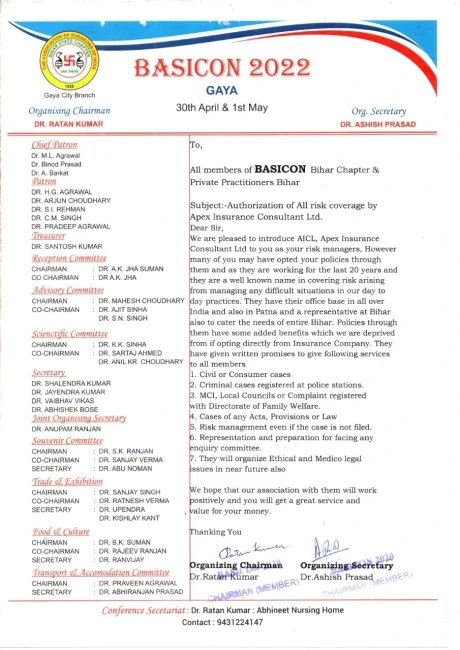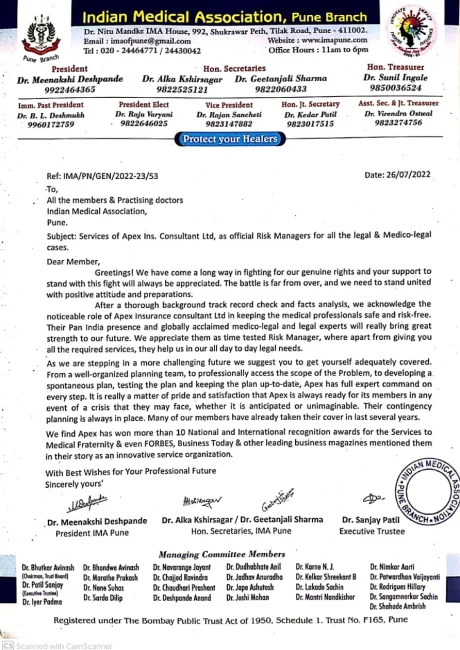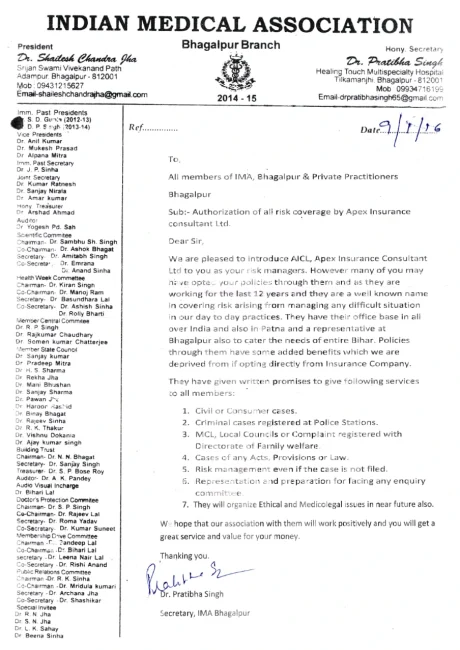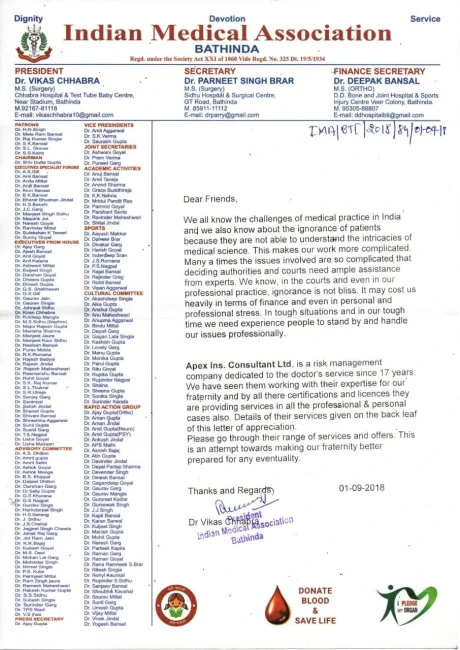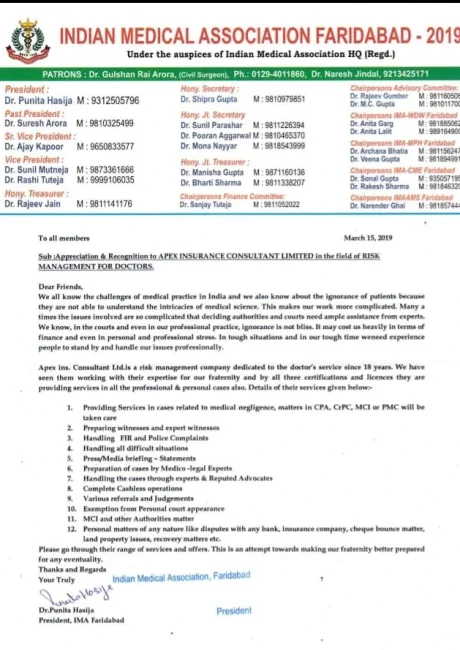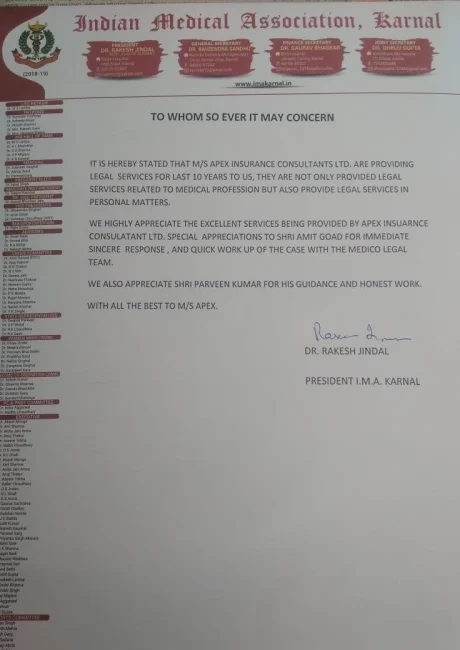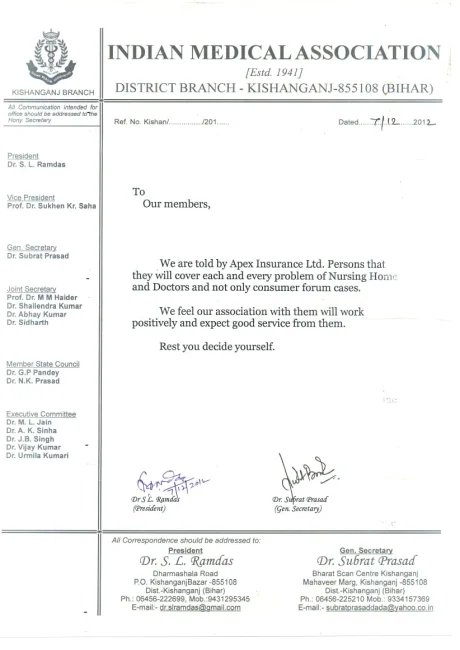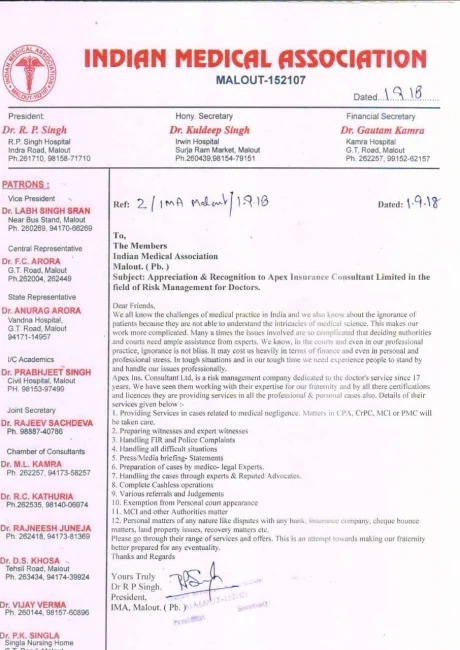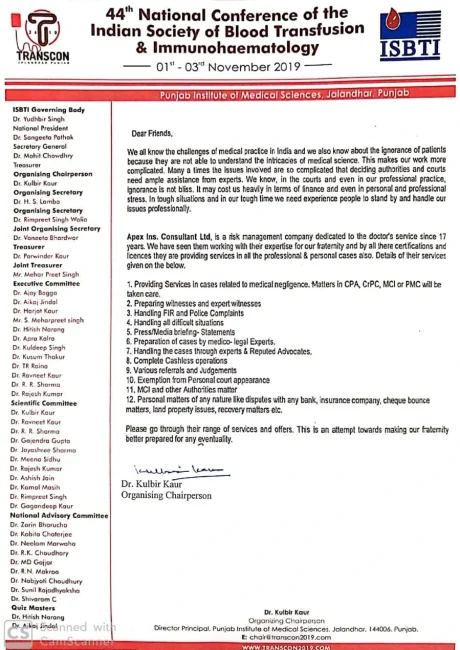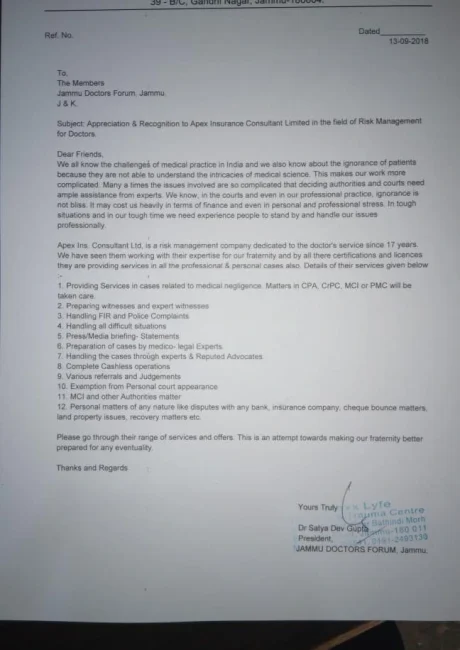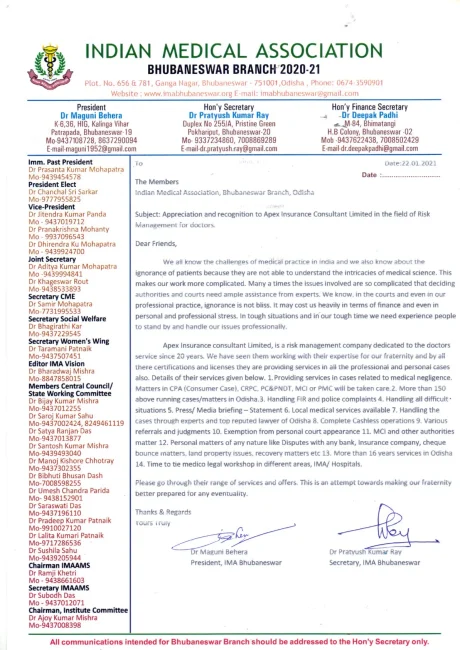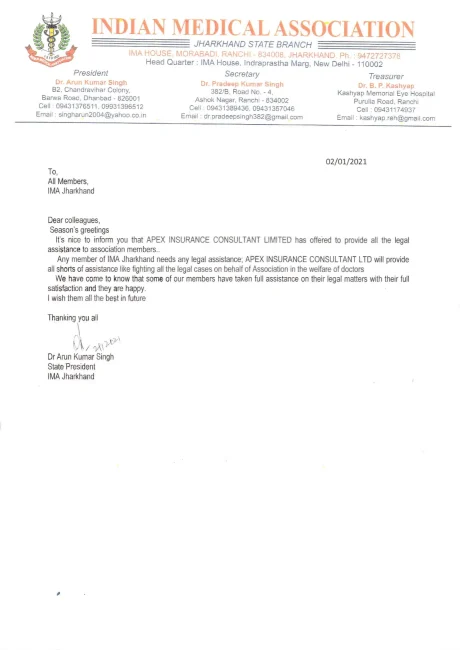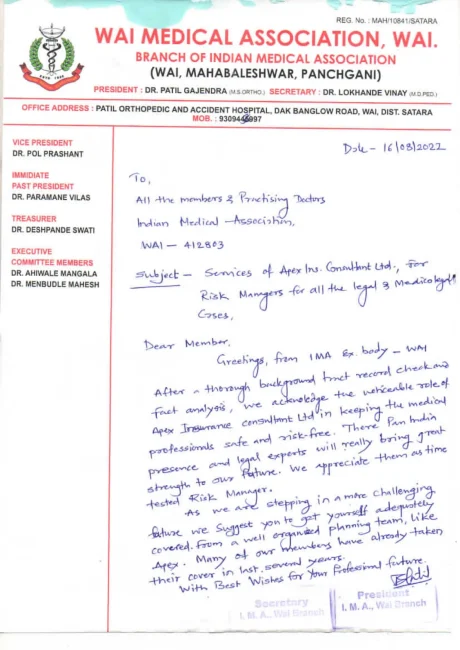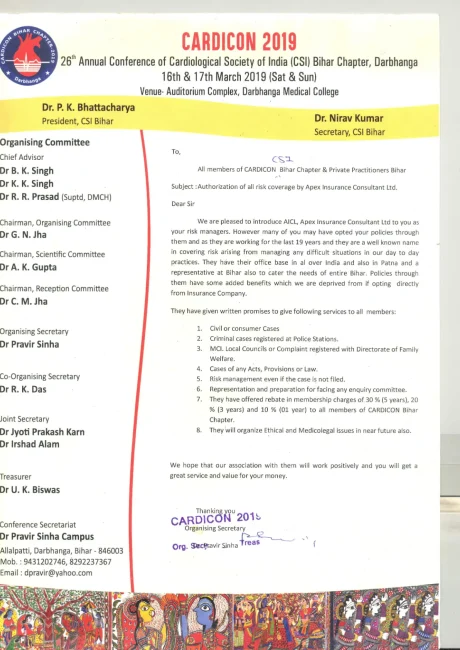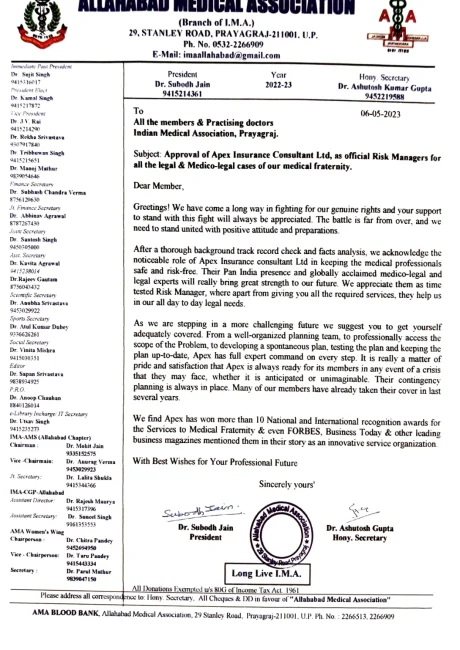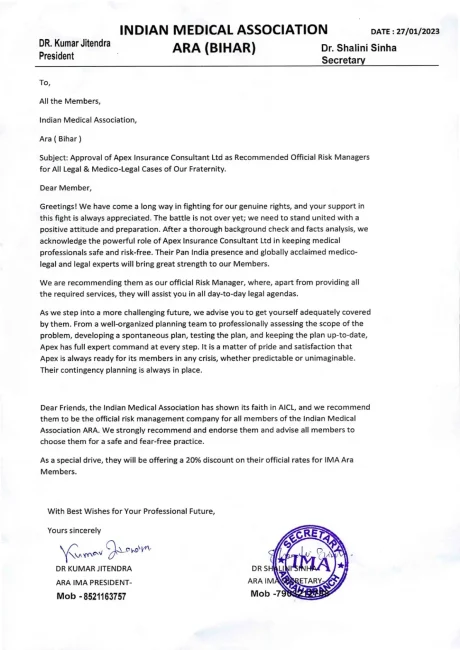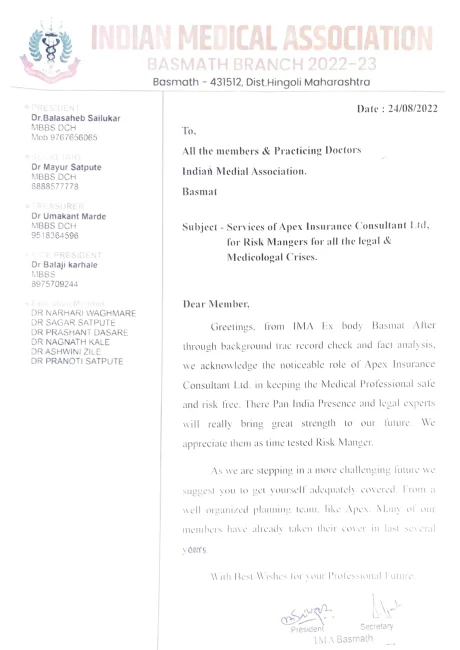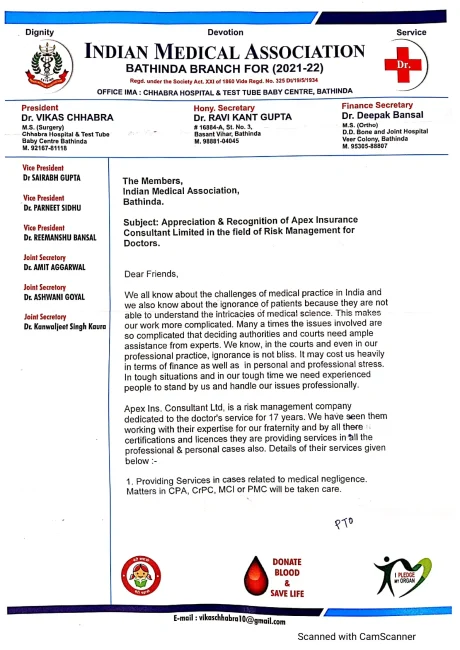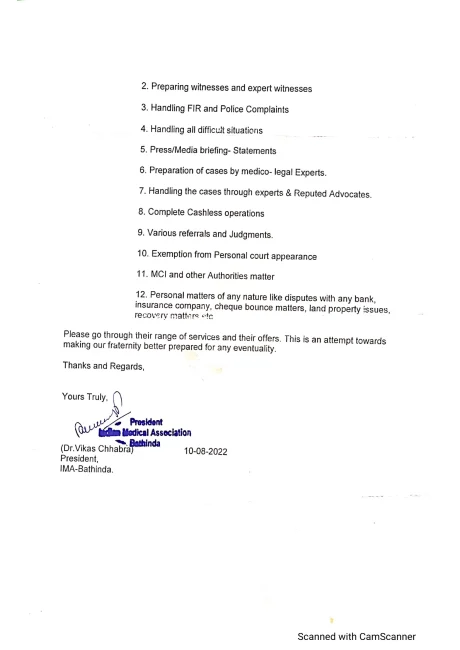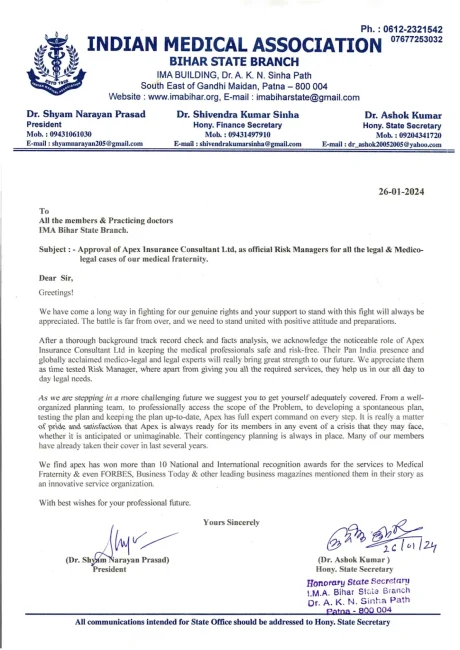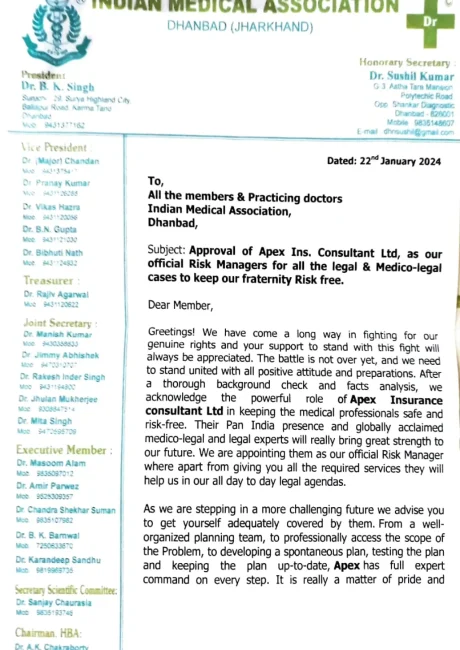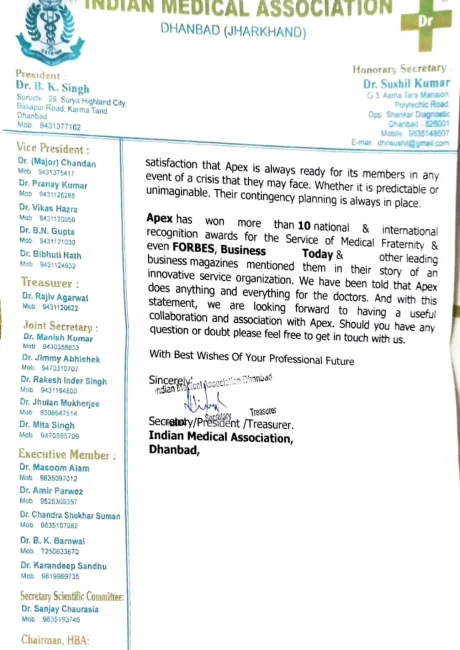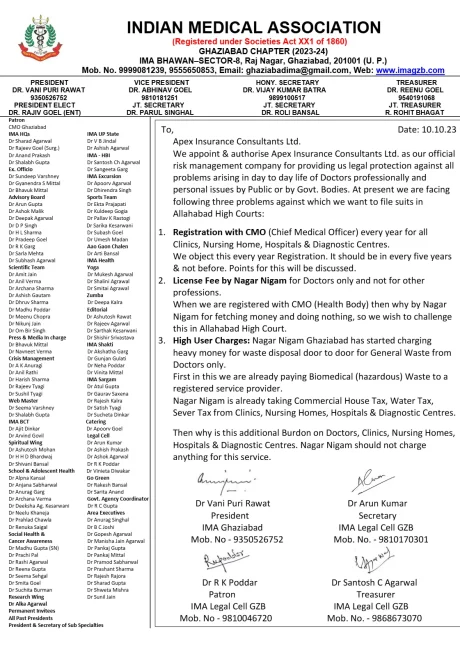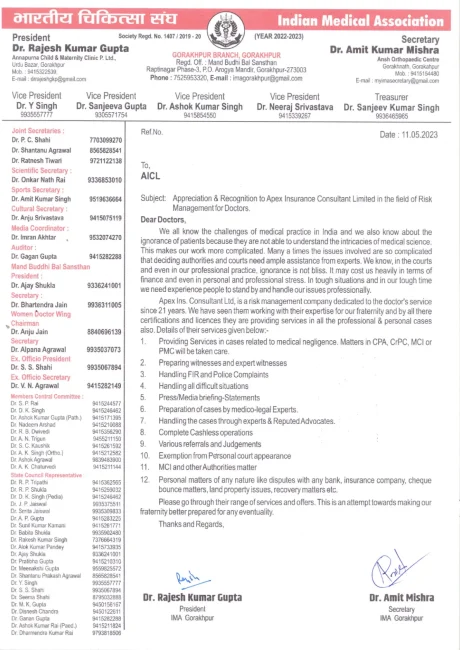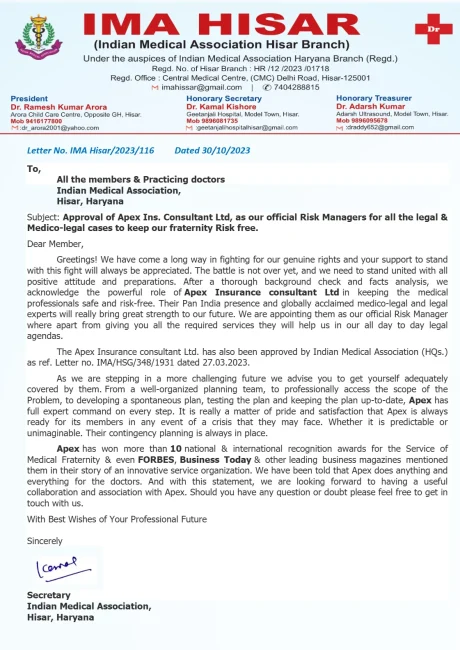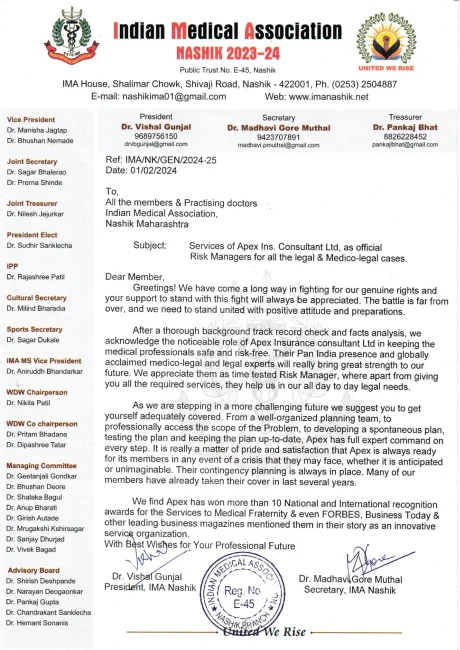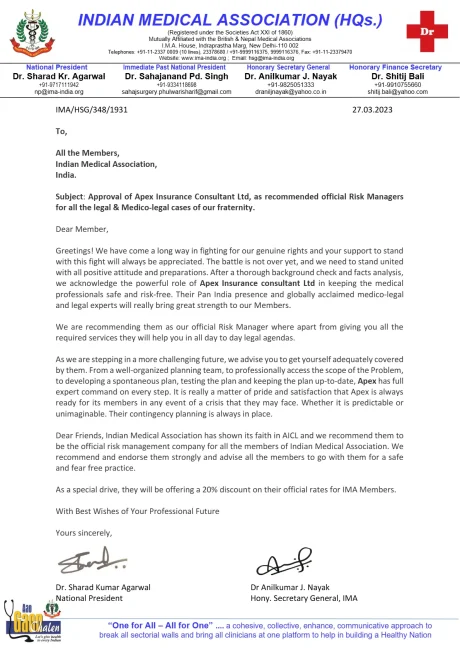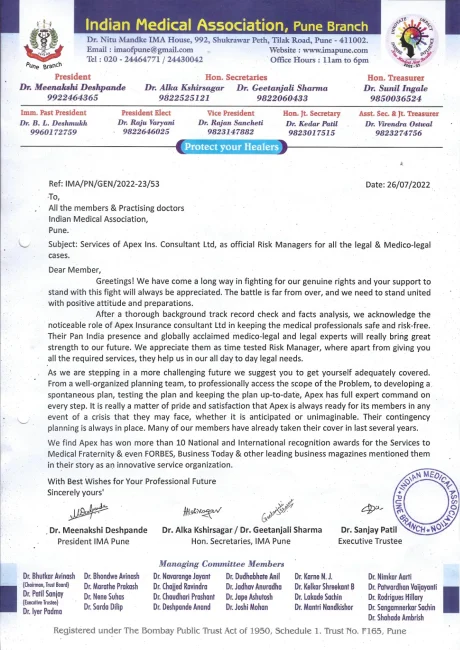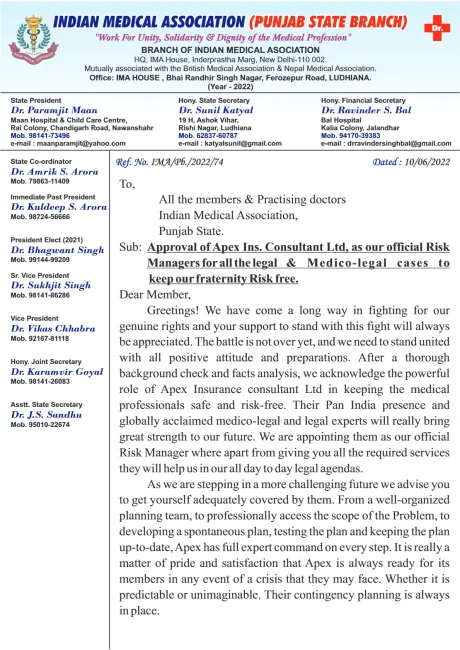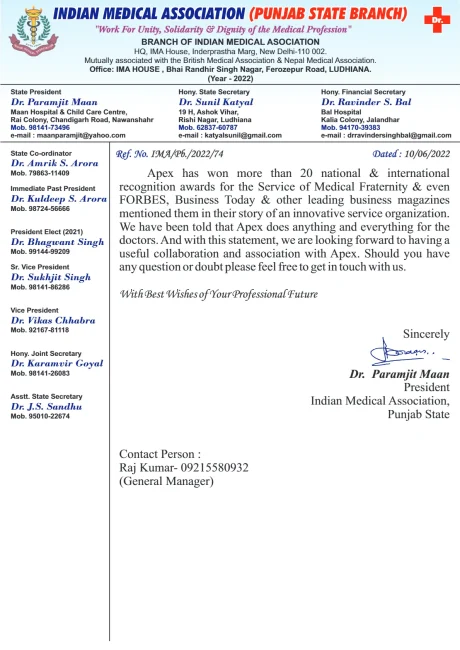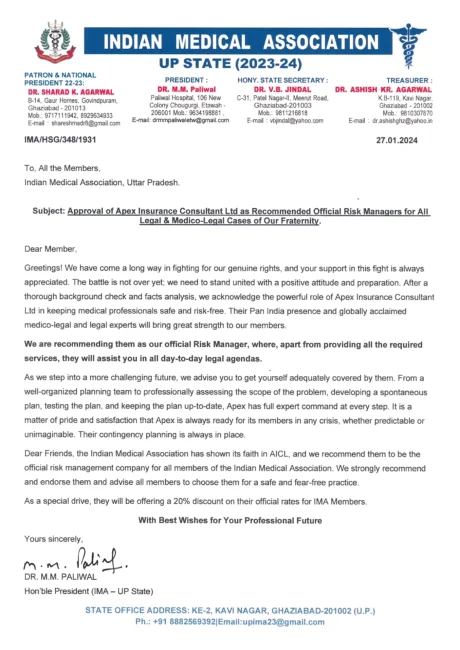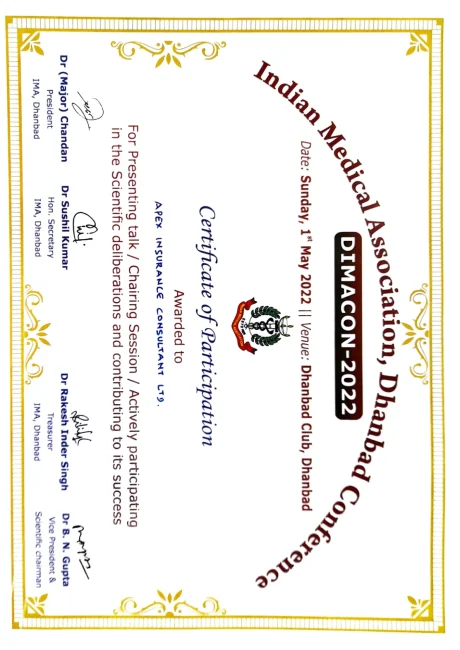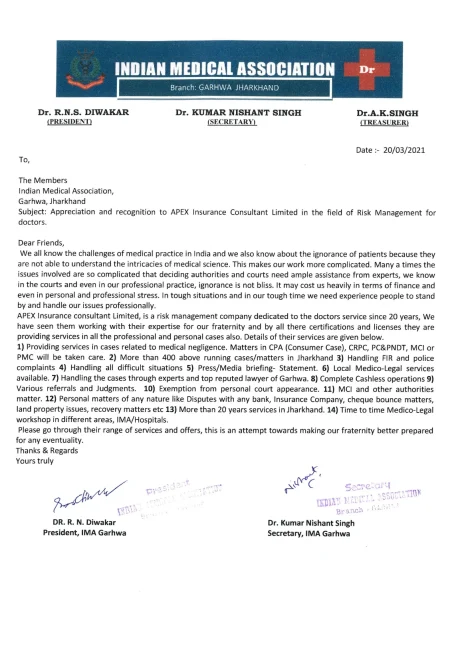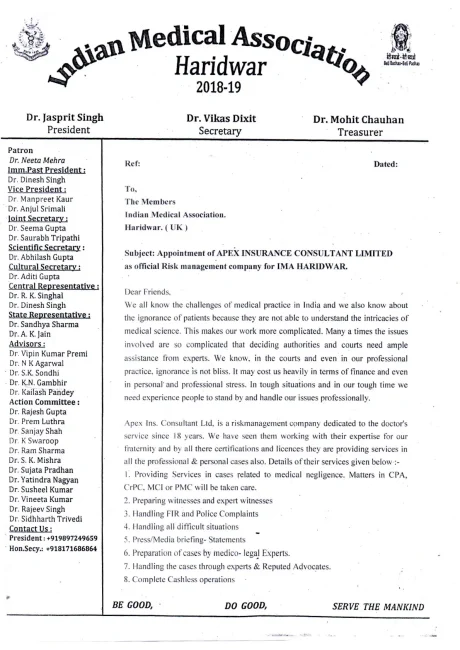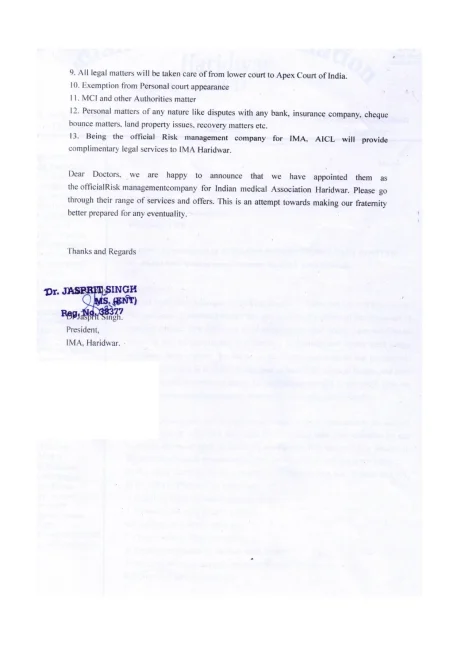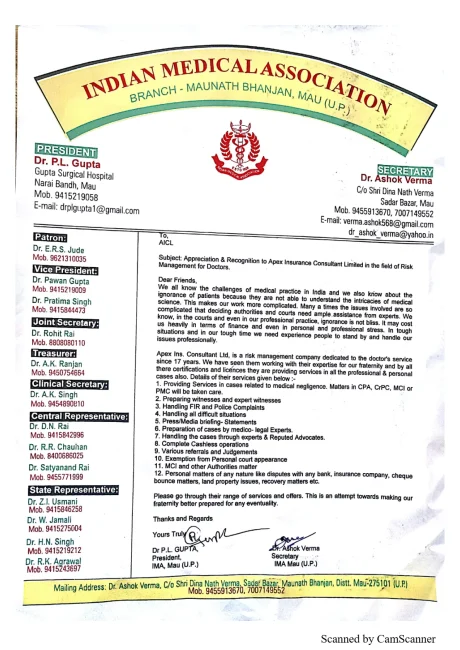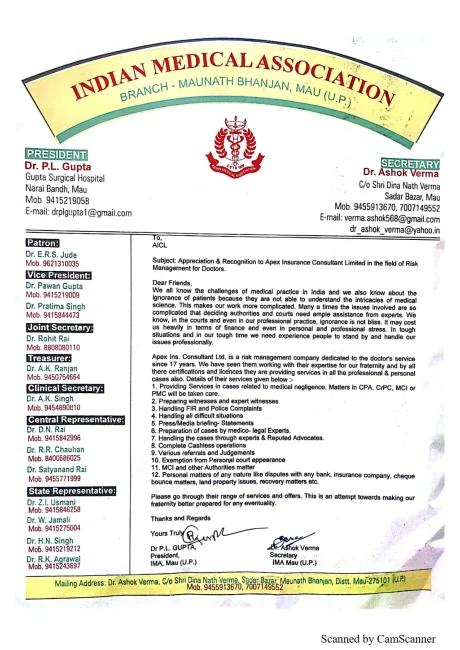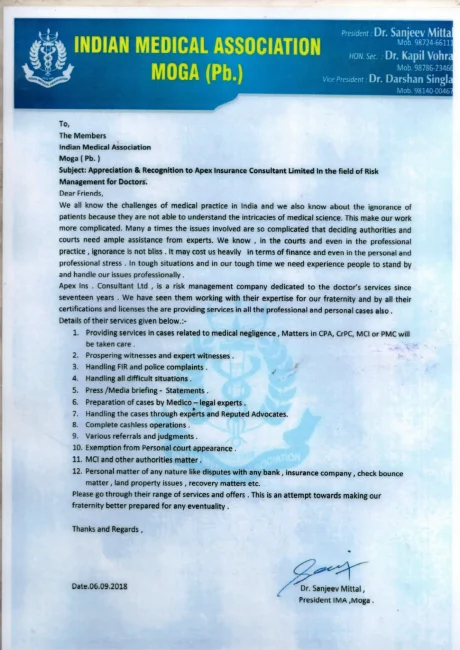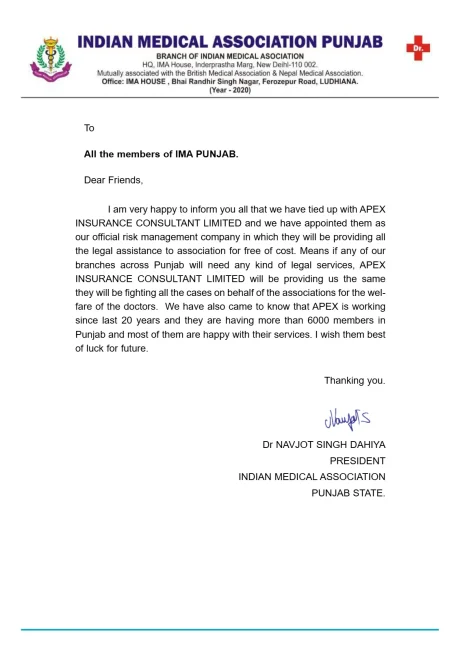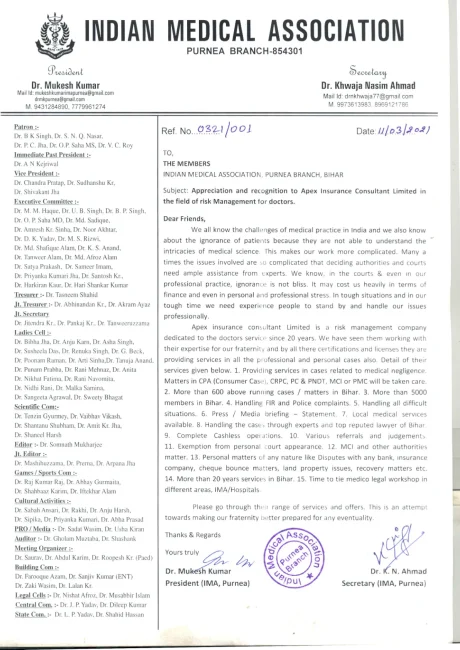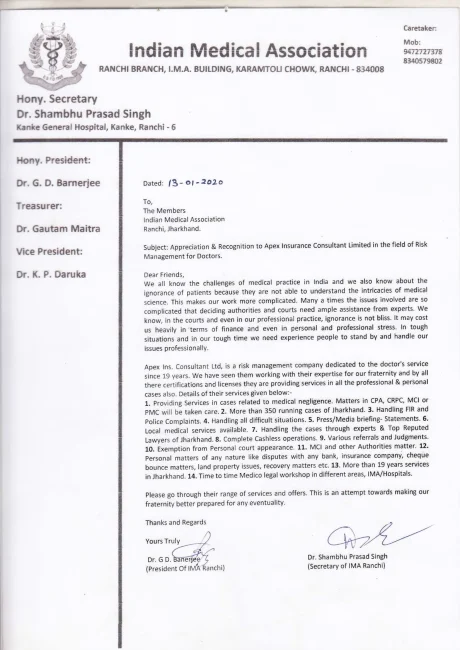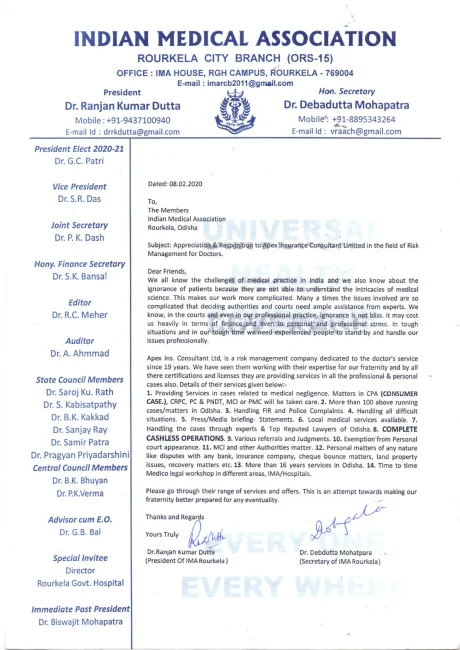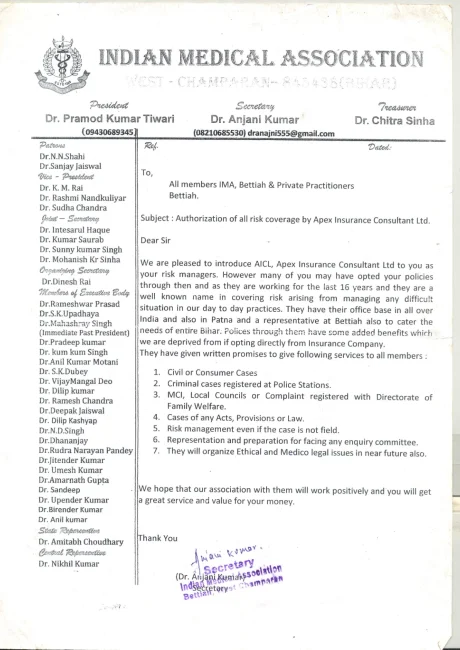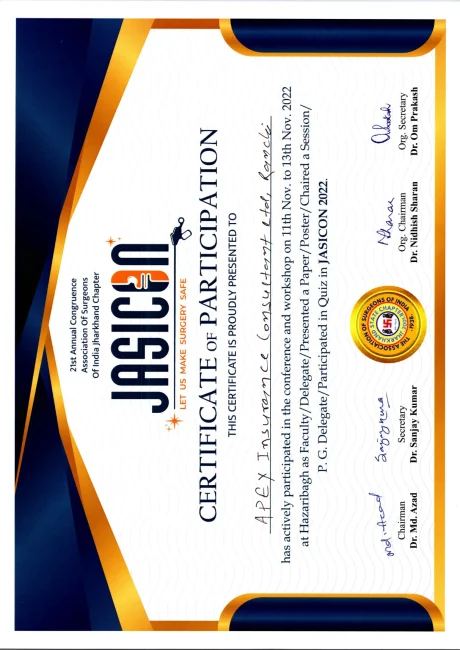BY
Dr. Mahsh Baldwa,
M.D,D.C.H,LL.B,LL.M , Ph. D(law)
SENIOR MEDICOLEGAL SPECIALIST & ADVISOR
Formerly Assistant Professor of Pediatrics at T.N. Medical College and Nair Hospital, Mumbai-400008
Ex. Asst. Professor JJ Hosp, Grant medical college
Professor, paper setter & examiner of law to postgraduate students of University Department of Law, University of Mumbai
Baldwa Hospital, Sumer Nagar,S.V. Road,
Borivali (West)Mumbai 400 092
drbaldwa@quicklegalindia.com
www.quicklegalindia.com, drbaldwa@yahoo.com
Cell 09322990138
022-28050268
022-28056410
022-28659737
WHAT IS VICARIOUS LIABILITY?
Delegation of medical work to junior medical professionals, compounders, nurses, (be those qualified or unqualified staff), employed or contracted or on profit sharing basis, The medical professional owes vicarious liability to patient on the basis of sound legal principle that, one can delegate medical work not responsibility
VICARIOUS LIABILITY OF HOSPITALS
Hospitals too were initially not liable for the acts of its professional staff. In England that was changed in Gold versus Essex County Council[1] wherein a little girl was awarded damages for radiation burns on her face for the negligent administration x-rays, by the radiologist of the hospital, X-ray therapy for warts on the face. This was followed by Cassidy versus Ministry of Health[2] where a man was awarded damages for negligent treatment by the hospital staff for two stiff fingers (In this case the man came out of the hospital with four stiff fingers). The reasoning given by the court was that the hospital was liable since they employed the staff, chosen by them for the task of treatment and it was in their hands the ultimate sanction-the power of dismissal. The patient who entered the hospital, the court reasoned, had no choice in the selection of the medical professional or the treatment offered to him.
“Vicarious” means arising out of a vicar or a deputy or an agent. Vicarious liability indicates liability arising out of an agent’s, a deputy’s, or a substitute’s wrongful actions or omissions of their duties, and not out of the medical professional’s own wrongs. In the course of their professional duties, medical professionals often have to requisition the services of nurses, technicians and paramedical staff. In hospitals there are other categories employed to assist the medical professional in charge of the patients: housemen and registrars, ward boys and ayahs, pharmacists, physiotherapists, etc. The medical professional (if he owns the institution or nursing home), or the hospital that engages the medical professionals and supportive services, has vicarious liability. This liability is applicable only for civil liabilities, not criminal.
There is no principle of employer’s liability in criminal law. There is no indirect or secondary or vicarious criminal liability. The vicarious civil liability to compensate the victim monetarily for loss or injury to the body or mind is based on the principle that whosoever puts another person in his place to do an act or class of acts for him or in his absence (however short that absence may be), necessarily leaves that agent or employee, agent or proxy to act for the principal medical professional or master. For legal purposes, the principal or the master is also answerable for the wrong of the person so entrusted either in the matter of doing that thing or in doing that thing in a matter in which it ought not to have been done & that it is done in the course of the employment or engagement. In most cases an employee or servant may not be economically solvent or capable to compensate the victim. Hence it is socially convenient to hold the master liable, based on the principle of “Respondent Superior”. Governments, Municipalities or the trustees of a trust running a hospital cannot escape vicarious liability on the ground that as employers they have no control over the acts of their medical professionals.
It is not necessary that every act of the employee, giving rise to a mishap and resultant liability to pay for the injury should be proved to have been expressly authorized by the master. It should be enough that the act must be related to or connected with the duty or assignment of the servant.
There is one exceptional situation to the principle of vicarious liability. If the employee, instead of doing what he is employed to do, does something beyond the assignment or duty, or does something which he cannot be said to have been possibly asked or authorized to do, then the master has no vicarious liability. Some examples of this are: an employee stealing a gold chain from a patient’s neck while the patient is asleep; or a male employee misbehaving with a female patient.
A few examples of vicarious liability of hospitals are a patient falling from a trolley while being carried by a ward boy, a patient in bed falling from the cot because of the absence of protective railing, or a visitor slipping and falling on a slippery floor.
Medical institutes and nursing homes would be well advised to get adequate insurance cover for liabilities arising out of the negligence of medical as well as paramedical staff.
VICARIOUS LIABILTY OF HOSPITAL OF EMPLOYING UNQUALIFIED NURSE
Unqualified Nurse gave Injection chloroquine i. v. bolus causing cardiac arrest. There was a delay in reviving the heart and lungs. Brain dam- age occurred due to cardio-respiratory failure. Vicarious negligence held of hospital for negligence of unqualified nurse and very heavy compensation granted to child and parents, the appeal preferred against the decision of the National Commission to award Rs. 12.5 lakhs as compensation to the child and Rs.5 lakhs as compensation to the parents, the Supreme Court of India on 25.3.1998 upheld the award against the Hospital.
On 30.12.1993 at 9 am Miss B. M., nurse of the Spring Meadows Hospital, New Delhi, on advice of the senior consultant Pediatrician, Dr P B asked the father of the minor patient to get inj. Lariago. The father of the child purchased the medicine that was written down by the nurse and gave it to her. The nurse injected the same i. v. to the child, upon which the child collapsed, had cardiac arrest and consequently suffered brain damage and continues to survive in a vegetative state.
The nurse pleaded that as the child was already taking chloroquine syrup and when the medical professional advised that injection should be given, she thought that the same drug Chloroquine was to be given as an i. v. injection. In fact, Dr P. B. had asked for injection IV Chloramphenicol to be given. It was the duty of the Resident medical professional who was on the round to write, give the injection and take all care.
The Supreme Court held that a consultant could be negligent where he delegates the responsibilities to his junior with the knowledge that the junior was incapable of carrying out his duties properly.
The insurance company with whom the hospital was insured pleaded that they cannot be made liable because the nurse Ms B. M. was not a qualified nurse nor registered with the nursing council of any State. As the present condition of the child was on account of the negligence of an unqualified nurse, they could not be made liable. But the court held that since both the nurse and the resident medical professional were negligent the insurance co. was liable to indemnify the amount of Rs.12.375 lakhs as per the terms of the policy as the case was fully covered under the indemnity insurance. The remaining amount was to be paid by the hospital as it was held vicariously liable.
The court held that both the parents of the child as well as the child would be consumers within the meaning of section 2(1)(d)(ii) of the C. P. Act and as such can claim compensation separately under the Act. The court held the nurse and the resident medical professional Dr D negligent. The court also held that the hospital is responsible for the negligence of the employees and is also liable for its consequences. The court concurred with the following findings of the National Commission, that the hospital was negligent in employing unqualified people as nurse and in entrusting a minor child to her care, there had been considerable delay in reviving the heart of the child, and this delay damaged the brain.[3]
VICARIOUS LIABILTY OF HOSPITAL OF EMPLOYING SCRUB NURSE WHO DID NOT COUNT MOPS PROPERLY, THUS MOP WAS LEFT IN ABDOMEN
It was held that though the Thiruvalla Medical Mission Hospital is a charitable institution and was run under a Trust Deed, but as the treatment done was on payment of consideration, which is on record; the complainant’s wife underwent Caesarean operation, but a large sponge was left behind as was proved by the evidence of the medical professional who removed it and also from the C. T. Scan report. The scrub nurse was responsible for counting the sponges and negligence was held on her part. The hospital as employer was vicariously held liable to compensate but as the hospital was insured, the Insurance Company was asked to pay compensation amount of Rs. 98,506/- to the complainant. [4]
DELEGATION OF DUTY
A medical practitioner undertaking the treatment of patient is personally liable for the diagnosis and treatment. A surgeon retained to perform an operation will be liable if he delegates his duty to a colleague who fails to use reasonable care.[5] A medical practitioner retained to act for a patient may delegate part of his work to another
MEDICAL PROFESSIONAL REMAINS RESPONSIBLE FOR LACK OF CARE IN DELEGATED WORK
Medical professional remains responsible for any lack of care in the performance of the delegated work. The contractual duties of care and skill are non-delegable, in the sense that performance of some works of the retainer may in practice be delegated, but the responsibility for it cannot.[6]
ENGLISH LAW DOES NOT RECOGNISE THE TEAM STANDARD
The English law does not recognize the team standard. Accordingly the responsibility of a nurse in the course of an operation is different from that of a surgeon.[7] Mustill, L.J.[8] rejected the notion of a team standard of care “whereby each of the persons who formed the staff of the unit held themselves out as capable of undertaking the specialized procedures which that unit set out to perform” on the ground that it would expose a student nurse to an action of negligence for failure to possess the skill and experience of a consultant.
HOSPITALS ARE LIABLE FOR NEGLIGENCE OF THE MEMBERS OF THE HOSPITAL STAFF INCLUDING NURSES AND MEDICAL PROFESSIONALS.
The distinction drawn by Kennedy, L.J.[9] between professional duties and ministerial or administrative duties had been disapproved by the court of appeal in Cassidy v Ministry of Health[10] wherein it is laid down that the hospitals are liable for negligence of the members of the hospital staff including nurses and medical professionals. The nursing home and the private hospital are not responsible for the negligence of the physicians and surgeons who are not appointed by the nursing home and the private hospital.[11]
HOSPITAL IS LIABLE IF IT PROVIDES THE SPECIALIST, BUT NOT IF THE PATIENT OBTAINS HIM.
Lord Denning [12] has summarized the proposition by expressing the view that the hospital is liable if it provides the specialist, but not if the patient obtains him.
In a case of Sushma Sharma and others v. Bombay Hospital and others[13] it was observed patient, aged 63 and having multi-medical problems like ischemic heart disease and chronic renal failure took admission to the hospital with fractured neck femur (right hip joint)-opposite party No.2, a consulting cardiologist Of the hospital examined and evaluated him ‘moderately high risk for surgery in view of the indefinite cardiac status and additional renal involvement’- Operated-Died as a result of cardiac arrest-Complaint-Surgery conducted without any pre-operative assessment and evaluation; no coordination amongst the doctors; and that the orthopaedic surgeon conducted the surgery against the advice of the anaesthetist and the cardiologist-All these allegations proved-Although the operating surgeon not impleaded, the hospital could not escape from its responsibility being vicariously liable for the negligence of its doctors.
IN INDIA THE GOVERNMENT IS A NECESSARY PARTY IN A SUIT INSTITUTED AGAINST A MEDICAL PROFESSIONAL ATTACHED TO THE GOVERNMENT HOSPITAL FOR DAMAGES
In India the Government is a necessary party in a suit instituted against a medical professional attached to the government hospital for damages or other relief in respect of any act alleged to have been done by the medical professional in his official capacity.[14]
THE HOSPITAL COULD NOT ESCAPE ITS LIABILITY FOR NEGLIGENCE OF PART TIME MEDICAL MAN
Even the hospital could not escape its liability for negligence of part time medical man attached to the hospital.
[1] (1942) 2 KB 293
[2] (1951) 2 KB 343
[3] Spring Meadows Hospital & Anr v. Harjot Ahluwalia (through K. S. Ahluwalia) & Anr. 1998 (3) CPR 1 (SC) : 1998 (1) CPJ 1: JT 1998 (2) SC 620. 2. 1997 (2) CPJ 98: 1997 (3) CPR 1 (NCDRC).,
[4] Aleyamma Varghese v. Dewan Bahadur Dr. V Varghese & Ors. 1997 (3) CPJ
165 (Kerala SCDRC)
[5] Morris v Winsbury-white (1937) 4 All ER 494; Stewart v Rayner (1957) 84 NW
(2nd) 816.
[6] D and F Estates v Church Comrs. For England (1987)36 BLR 72 CA affirmed
132 Sol Jo 1092: (1988)2 All ER 992: (1988)3 WLR 368 HL.
[7] Gold v Essex County Council (1942)2 KB 293: (1942)2 All ER 237: 167 LT
166: 86 Sol Jo 295 CA.
[8] Wilsher v Essex Area Health Authority (1987) QB 730: (1986)3 All ER 801:
(1987)2 WLR 425: 130 Sol Jo 749 CA reversed (1988)1 All ER 871: (1988)2
WLR 557: 132 Sol Jo 418: 3 BMLR 37 HL.
[9] Hillyer v St. Bartholomew’s Hospital
[10] Cassidy v Ministry of Health (1942)2 KB 293: (1942)2 All ER 237: 112 LJKB 1:
167 LT 166: 86 Sol Jo 295 CA.
[11] Gold v Essex County Council (1942)2 KB 293: (1942)2 All ER 237: 112 LJKB
1: 167 LT 166: 86 Sol Jo 295 CA.
[12] Roe v Minister of Health (1954)2 QB 66: (1954)2 All ER 131: (1954) WLR
915: 98 Sol Jo 319 CA.
[13] 2007 p.594, NCDRC
[14] Order 27, r.5A of the Code of Civil Procedure 1908

